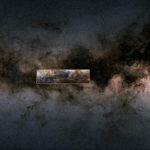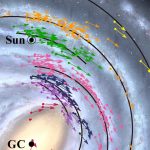Key Takeaways:
- Astronomers discovered the smallest white dwarf star ever seen, but it also packs the biggest punch, containing more mass than our sun in a lunar-sized body.
- This oddity formed from the collision of two white dwarfs, highlighting how these stellar collisions can create unique stellar objects.
- The newfound white dwarf is a speedy rotator, completing a spin in just 7 minutes, and boasts an extreme magnetic field nearly a billion times stronger than the Sun’s.
- The star might be on the path to becoming a neutron star, hinting at a new way these super-dense objects could form.
- This discovery suggests similar stellar mergers might be more common than previously thought, raising questions about how often they occur and how they influence the galaxy.
The smallest and most massive white dwarf star ever observed has been found by astronomers.
A study that was published in the journal Nature claims that the “very special” star is packed with more mass than our sun into a comparatively small body that is about the size of the moon. It originated from the collision and merger of two less massive white dwarf stars that had been in orbit around one another for their entire lives.
Most stars eventually die and become white dwarfs, which are basically smoldering corpses and among the densest objects in the universe, along with neutron stars and black holes. Our sun will turn into a red giant in roughly 5 billion years, and then it will eventually experience the same fate.
Lead author Ilaria Caiazzo stated in a statement, “It may seem counterintuitive, but smaller white dwarfs happen to be more massive.” “This is due to the fact that white dwarfs lack the nuclear burning that keep up normal stars against their own self gravity, and their size is instead regulated by quantum mechanics.”
The highly magnetized dead star, ZTF J1901+1458, is situated only 130 million light years from Earth, making it a reasonably close object. Zwicky Transient Facility (ZTF) at Caltech’s Palomar Observatory made the discovery.
The merging of the two white dwarfs produced the most massive star ever discovered, with a mass of roughly 1.35 times that of the sun. Had one of the stars been slightly more massive, the merger would have produced a supernova, which is a violent explosion.

ZTF J1901+1458 rotates quickly, completing a full revolution in just seven minutes, and possesses a “extreme” magnetic field that is almost one billion times stronger than the sun. The sun’s rotation takes around 27 days to finish.
It is the smallest known white dwarf in the universe by more than 400 miles, with a diameter of 2,670 miles. The moon is 2,174 miles across in comparison.
“We caught this very interesting object that wasn’t quite massive enough to explode,” Caiazzo says. “We are truly probing how massive a white dwarf can be.”
So, what’s next for the rare star?
The star’s mass is thought to be enough for it to potentially develop into a neutron star, which typically forms when a star that is substantially larger than the sun explodes in a supernova. If their theory is right, a large number of neutron stars in the universe might have formed in this previously undiscovered approach.
“It is so massive and dense that, in its core, electrons are being captured by protons in nuclei to form neutrons,” Caiazzo stated. “Because the pressure from electrons pushes against the force of gravity, keeping the star intact, the core collapses when a large enough number of electrons are removed.”
Given the star’s young age (less than 100 million years old) and close proximity to Earth, comparable stellar phenomena might be more common in our own galaxy.
Up until now, no one has been able to methodically investigate astronomical phenomena on a short timescale on this kind of scale. The results of these efforts are stunning,” said Kevin Burdge, who first spotted the star in all-sky images.
However, scientists claim they are only beginning their work.
“There are so many questions to address, such as what is the rate of white dwarf mergers in the galaxy, and is it enough to explain the number of type Ia supernovae?” stated Caiazzo. “How is a magnetic field generated in these powerful events, and why is there such diversity in magnetic field strengths among white dwarfs? Finding a large population of white dwarfs born from mergers will help us answer all these questions and more.”


